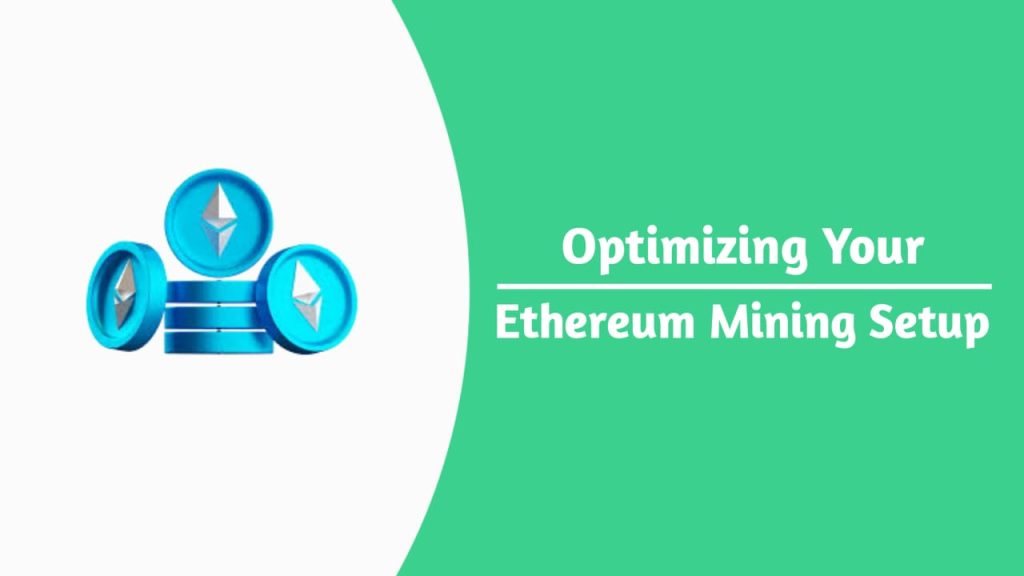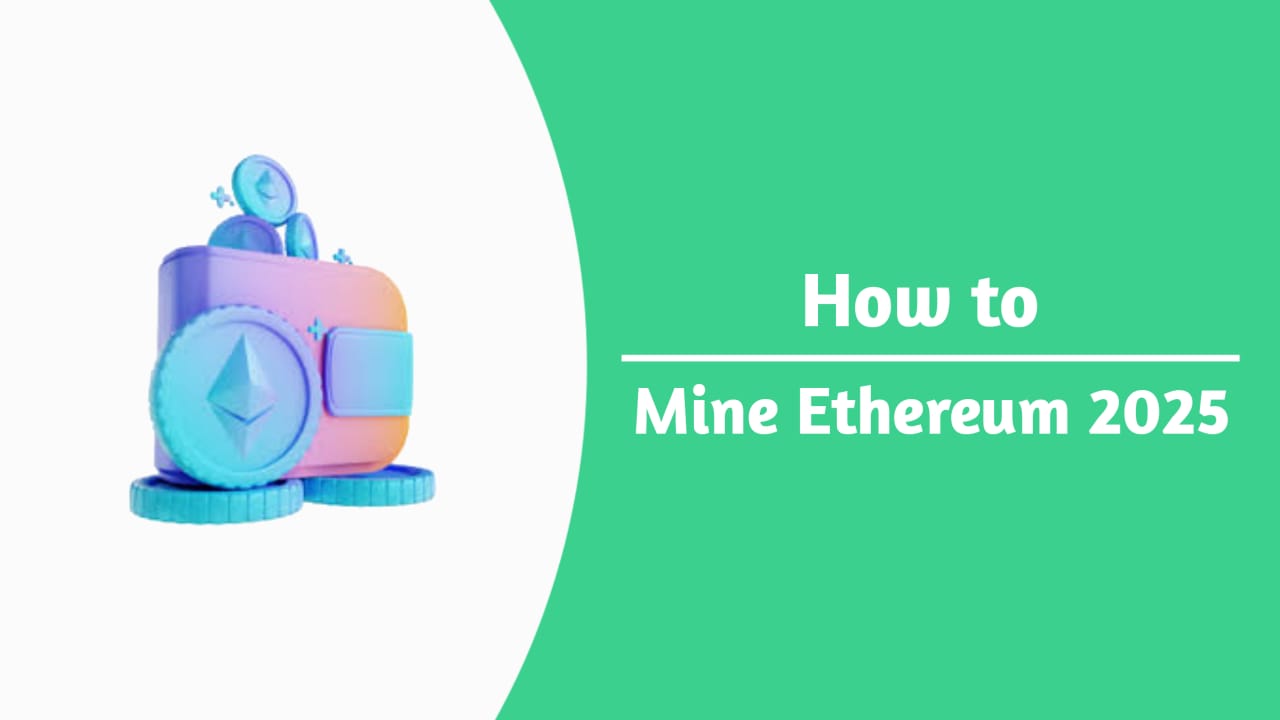Table of Contents
Introduction
Ethereum, the second-largest cryptocurrency by market capitalization, has become a cornerstone of the blockchain ecosystem. Known for its smart contract functionality and decentralized applications (dApps), Ethereum has attracted a massive following of developers, investors, and miners. If you’re interested in joining the Ethereum network and earning rewards by mining, this guide will walk you through everything you need to know about how to mine Ethereum.
In this article, we’ll cover the basics of Ethereum mining, the hardware and software requirements, step-by-step instructions, and tips to optimize your mining operations. Whether you’re a beginner or an experienced miner, this guide will provide you with the knowledge to get started or improve your Ethereum mining efforts.
What is Ethereum Mining?
The process of verifying transactions and appending them to the Ethereum blockchain is known as Ethereum mining. Miners use computational power to solve complex mathematical problems, which helps secure the network and maintain its decentralized nature. Miners get Ether (ETH), the native coin of the Ethereum network, as payment for their labors.
Mining is a critical component of Ethereum’s consensus mechanism, known as Proof of Work (PoW). However, Ethereum is transitioning to Proof of Stake (PoS) with the Ethereum 2.0 upgrade, which will eventually make mining obsolete. Until then, mining remains a viable way to earn ETH.
How Does Ethereum Mining Work?
Ethereum mining involves solving cryptographic puzzles using computational power. Here’s a simplified breakdown of the process:
- Transaction Verification: Miners collect pending transactions from the Ethereum network and verify their validity.
- Creating a Block: Verified transactions are grouped into a block.
- Solving the Puzzle: Miners compete to solve a complex mathematical problem associated with the block. This process is known as hashing.
- Adding the Block to the Blockchain: The first miner to solve the puzzle broadcasts the solution to the network. If the answer is confirmed by other miners, the block is appended to the blockchain.
- Receiving Rewards: The successful miner receives a block reward in ETH, along with transaction fees from the included transactions.
Is Ethereum Mining Still Profitable?
The profitability of Ethereum mining depends on several factors, including:
- Hardware Costs: The initial investment in mining equipment.
- The price of powering your mining machine is known as electricity costs.
- Ethereum Price: The market value of ETH.
- Network Difficulty: The computational difficulty of mining, which increases as more miners join the network.
- Block Rewards: The amount of ETH awarded for mining a block.
While mining can still be profitable, it requires careful planning and optimization. Use online mining calculators to estimate your potential earnings based on your hardware and electricity costs.
Hardware Requirements for Ethereum Mining
GPUs vs. ASICs
Ethereum mining is primarily done using Graphics Processing Units (GPUs) because the Ethereum algorithm, Ethash, is designed to be ASIC-resistant. This means that specialized mining hardware (ASICs) is less efficient for Ethereum mining compared to GPUs.
Recommended GPUs for Ethereum Mining
The following are a few top GPUs for Ethereum mining:
- NVIDIA GeForce RTX 3060 Ti
- AMD Radeon RX 580
- NVIDIA GeForce GTX 1080 Ti
- AMD Radeon RX 5700 XT
Building a Mining Rig
A mining rig is a custom-built computer designed specifically for mining cryptocurrencies. Here’s what you’ll need:
- GPUs (6-8 for optimal performance)
- Motherboard with multiple PCIe slots
- Power Supply Unit (PSU) with sufficient wattage
- CPU and RAM
- Storage (SSD recommended)
- Cooling system (fans or liquid cooling)
- Mining frame or open-air case
Software Requirements for Ethereum Mining
Mining Software
- Popular Ethereum mining software includes:
- Claymore’s Dual Miner: A versatile miner that supports both AMD and NVIDIA GPUs.
- PhoenixMiner: Known for its stability and performance.
- GMiner: A user-friendly miner with low developer fees.
- Ethminer: The official Ethereum mining software.
Ethereum Wallets
You’ll need a wallet to store your mined ETH. Options include:
- Hardware Wallets: Ledger Nano S, Trezor
- Software Wallets: MetaMask, MyEtherWallet
- Exchange Wallets: Binance, Coinbase
Step-by-Step Guide to Mining Ethereum
Step 1: Set Up Your Ethereum Wallet
Choose a wallet and secure your private keys. This is where your mind ETH will be stored.
Step 2: Choose Your Mining Hardware
Select GPUs and build your mining rig based on your budget and goals.
Step 3: Install Mining Software
Download and install your preferred mining software.
Step 4: Join a Mining Pool
Miners can pool their processing resources and split profits through mining pools. Popular Ethereum mining pools include:
- Ethermine
- SparkPool
- F2Pool
- Nanopool
Step 5: Configure Your Mining Software
Enter your wallet address, mining pool details, and other settings in the mining software.
Step 6: Start Mining Ethereum
Run your mining software and monitor its performance.
Optimizing Your Ethereum Mining Setup

Overclocking Your GPU
Overclocking can increase your GPU’s hash rate, but it also increases power consumption and heat output. Use tools like MSI Afterburner to find the optimal settings.
Reducing Power Consumption
Lowering your GPU’s power limit can reduce electricity costs without significantly impacting performance.
Monitoring Your Mining Rig
Use monitoring tools like HWMonitor or GPU-Z to track temperature, hash rate, and power usage.
Risks and Challenges of Ethereum Mining
Hardware Costs
Through mining pools, miners may combine their processing power and divide earnings.
Electricity Costs
High power consumption can eat into your profits.
Network Difficulty
As more miners join the network, the difficulty of mining increases, reducing individual rewards.
Proof of Stake Transition with Ethereum 2.0
Ethereum’s transition to PoS will eventually make mining obsolete. Miners should stay informed about the timeline and plan accordingly.
Alternatives to Mining Ethereum
Cloud Mining
Cloud mining allows you to rent mining hardware and earn rewards without managing physical equipment. However, it often comes with high fees and lower profitability.
Staking Ethereum 2.0
With Ethereum 2.0, you can earn rewards by staking ETH instead of mining. This requires locking up a minimum of 32 ETH in the network.
Frequently Asked Questions (FAQs)
Q: Can I mine Ethereum with a laptop?
A: While possible, mining with a laptop is not recommended due to limited performance and potential overheating.
Q: How long does it take to mine 1 Ethereum?
A: The time depends on your hardware, hash rate, and network difficulty. Use a mining calculator to estimate.
Q: Is Ethereum mining legal?
A: Yes, Ethereum mining is legal in most countries, but always check local regulations.
Conclusion
Ethereum mining can be a rewarding endeavor, but it requires careful planning, investment, and optimization. By following this guide, you’ll have the knowledge and tools to start mining Ethereum effectively. However, keep in mind the upcoming transition to Ethereum 2.0 and explore alternative options like staking if mining becomes less viable.
Whether you’re a beginner or an experienced miner, the key to success is staying informed and adapting to changes in the cryptocurrency landscape. Happy mining!
By following this comprehensive guide, you’ll be well-equipped to start mining Ethereum and maximize your earnings. Don’t forget to share this article with others who might be interested in learning how to mine Ethereum!
Expanding the Guide: Additional Insights and Tips
To ensure this guide is as comprehensive as possible, let’s dive deeper into some of the topics covered and provide additional insights and tips for aspiring Ethereum miners.
Understanding Ethereum’s Ethash Algorithm
The Ethash algorithm, used by Ethereum, is memory-hard by design.This means that mining efficiency is heavily dependent on the memory bandwidth of your GPU rather than raw processing power. As a result, GPUs with higher memory bandwidth tend to perform better in Ethereum mining.
The Importance of Cooling
Mining generates a significant amount of heat, especially when running multiple GPUs in a single rig. Proper cooling is essential to prevent overheating, which can lead to hardware failure. Consider using open-air cases, additional fans, or even liquid cooling systems to maintain optimal temperatures.
Calculating Your Break-Even Point
Before investing in mining hardware, it’s crucial to calculate your break-even point. This is the point at which your mining profits equal your initial investment and ongoing expenses. Factors to consider include:
- Hardware Costs: The total cost of your mining rig.
- Electricity Costs: The cost of powering your rig, which can vary depending on your location.
- Mining Rewards: The amount of ETH you can expect to earn based on your hash rate and network difficulty.
Use online mining calculators to input these variables and estimate your break-even point.
Joining a Mining Pool vs. Solo Mining
While solo mining allows you to keep the entire block reward if you successfully mine a block, the chances of doing so are extremely low unless you have a massive amount of computational power. For most miners, joining a mining pool is a more practical option. Mining pools combine the computational power of all participants, increasing the chances of mining a block. Members of the pool are subsequently given rewards according to the hash power they have supplied.
The Role of Gas Fees
In addition to block rewards, miners also earn transaction fees, known as gas fees. These fees are paid by users to have their transactions included in the blockchain. During periods of high network congestion, gas fees can significantly increase mining profitability.
Ethereum 2.0: What Miners Need to Know
Ethereum 2.0 represents a major upgrade to the Ethereum network, transitioning it from Proof of Work (PoW) to Proof of Stake (PoS). This transition will eliminate the need for mining, as validators will be responsible for securing the network and validating transactions. Miners should stay informed about the timeline for Ethereum 2.0 and consider alternative ways to earn ETH, such as staking.
Environmental Considerations
Mining consumes a significant amount of electricity, which has raised concerns about its environmental impact. If you’re concerned about the carbon footprint of your mining operations, consider using renewable energy sources or offsetting your energy consumption through carbon credits.
Staying Updated with Ethereum Developments
The cryptocurrency landscape is constantly evolving, and staying informed about the latest developments is crucial for miners. Follow Ethereum’s official blog, join mining communities, and participate in forums to stay up-to-date with news, updates, and best practices.
Advanced Mining Techniques
For experienced miners looking to maximize their profits, consider exploring advanced techniques such as:
- Dual Mining: Mining two cryptocurrencies simultaneously, such as Ethereum and Decred.
- Mining Rig Optimization: Fine-tuning your hardware and software settings to achieve the highest possible hash rate while minimizing power consumption.
- Diversifying Your Mining Portfolio: Mining multiple cryptocurrencies to spread risk and increase potential rewards.
Legal and Tax Considerations
Mining income is subject to taxation in many jurisdictions. Be sure to keep detailed records of your mining activities, including income and expenses, and consult with a tax professional to ensure compliance with local regulations.
The Future of Ethereum Mining
While Ethereum mining remains profitable for now, the transition to Ethereum 2.0 will eventually render it obsolete. Miners should consider diversifying their income streams and exploring other opportunities within the cryptocurrency space, such as staking, trading, or investing in decentralized finance (DeFi) projects.
Final Thoughts
Ethereum mining is a complex but potentially rewarding endeavor. By understanding the intricacies of the mining process, optimizing your hardware and software, and staying informed about industry developments, you can maximize your chances of success. However, it’s essential to approach mining with a clear understanding of the risks and challenges involved, as well as a plan for adapting to the changing landscape of the cryptocurrency world.
Whether you’re a beginner or an experienced miner, this guide provides the foundation you need to start mining Ethereum and navigate the exciting world of cryptocurrency. Happy mining!
By following this comprehensive guide, you’ll be well-equipped to start mining Ethereum and maximize your earnings. Don’t forget to share this article with others who might be interested in learning how to mine Ethereum!
